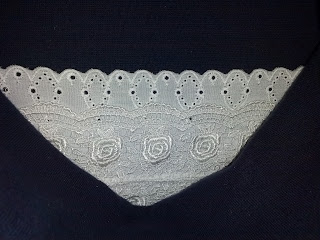I finished in on Monday (May 7th), but didn't want to post until today, just in case she checks my blog-- It would have ruined the surprise!
I simply created a giant rectangle and folded it in half (hamburger style) to get double the thickness, the sealed the edges (only three edges) with half double crochet.
 |
| This is the giant rectangle before I folded it. |
 |
| I did the edges in a contrasting bright red. |
 |
| Compare the size to the crochet hook. |
 |
| An "action shot"! |
Now, for the details:
I used Patons Classic Wool Taupe for the body of the potholder, and Patons Classic Wool Bright Red for the border. It is 100% pure new wool, so it ought to be good for use in the kitchen, and can be washed in cool to warm water (lay flat to dry).
A 4.5mm (size 7) crochet hook worked very well for me, but I am sure a 5mm (size 8) would be fine too.
A 4.5mm (size 7) crochet hook worked very well for me, but I am sure a 5mm (size 8) would be fine too.
To make it:
Chain 52.
1st row: 1 double crochet in 3rd chain from hook (counts as 2 double crochet). 1 double crochet in each chain to end of chain. Chain 2, and turn.
2nd row: 1 double crochet on top of the very end of the section that you just finished. What I mean is skip over two you chained. 1 double crochet in each section to the end. Chain 2, and turn.
Keep repeating until you get 18 rows total!
Then fold over the rectangle hamburger-style. Look for the edge opposite your original chain. This is the easiest edge to begin sealing the edge, since the double crochet leaves you with neat holes to insert your crochet hook.
Make sure you have folded right down the middle, and start "sealing" by half double crocheting in each double crochet (remember to go through both of the layers).
When you get to the end of the "top," chain to get a nifty loop to hang up your potholder.
Connect the loop with a slip stitch.
Half double crochet down the side and continue across the bottom.
When you seal up the bottom, you are done!











































